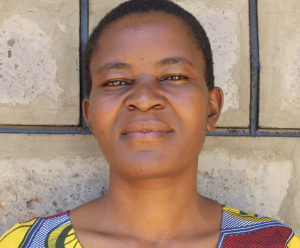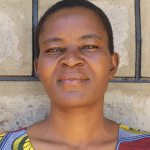Shitaho Community School is located in Shitaho Village in Kakamega County. The school has a population of 284 out of which we have 267 pupils (139 boys and 128 girls) with 30 teachers and two support staff.
The teacher on duty arrives in school by 6:30am and organizes the students for manual work, with the help of class prefects.
The pupils start by cleaning their classrooms, pavement, compound and the latrines which takes about 30 minutes. By 7am they go to class for remedial lessons and the normal class day officially begins at 8am. They take two breaks in the morning and then 12:40pm they go to their respective homes for lunch break. After lunch, the classes resume from 2pm to 3:10pm.
The pupils go for games for one hour and then go back to class for preps for another hour, ending the day at 5pm.
Sanitation
The school has very many challenges where the population of the pupils keeps increasing with the same number of sanitation platforms which are not enough.
"Indeed we are having a large number of pupils, 267 sharing latrines with one changing room for 128 girls and one urinary for 139 boys, we really urge you to intervene and support us please," board chairman, Mr. Simon Muhati, explained.
The headteacher got information about us after the protection of Mwikholo Spring where she is also a beneficiary. After that, she wrote a letter to us requesting for the project at the school.
Water
Pupils gather water from the piped tap water by placing the containers at the tap. The water at the tap is not regular so in cases where is no water pupils are requested to bring water from home. In fact, the tap only runs with water a few times each week.
Gathered water is stored in the same containers used to draw water. The school has one plastic container with a capacity of 2,500 liters which was donated to the school by another well-wisher.
The storage of the water from many different, unknown sources makes it hard to tell if the water is safe for drinking. Most of the pupils are affected by waterborne diseases, and the administration believes it is the poor quality of their water.
Here’s what we’re going to do about it:
Training
Training will be held for two days. The facilitator will use PHAST (participatory hygiene and sanitation transformation), ABCD (asset-based community development), CTC (child to child), lectures, group discussions, and handouts to teach health topics and ways to promote good practices within the school. The CTC method will prepare students to lead other students into healthy habits, as well as kickstart a CTC club for the school.
Handwashing Stations
This CTC club will oversee the new facilities, such as handwashing stations, and make sure they are kept clean and in working condition. The two handwashing stations will be delivered to the school, and the club will fill them with water on a daily basis and make sure there is always a cleaning agent such as soap or ash.
VIP Latrines
Two triple-door latrines will be constructed with local materials that the school will help gather. Three doors will serve the girls while the other three serve the boys. And with a new source of water on school grounds, students and staff should have enough to keep these new latrines clean.
Rainwater Catchment Tank
A 50,000-liter rainwater catchment tank will help alleviate the water crisis at this school. The school will also help gather the needed materials such as sand, rocks, and water from the spring for mixing cement. Once finished, this tank can begin catching rainfall that will be used by the school’s students and staff.
We and the school strongly believe that with this assistance, standards will significantly improve. These higher standards will translate to better academic performance!

 Rainwater Catchment
Rainwater Catchment
 Rehabilitation Project
Rehabilitation Project




































